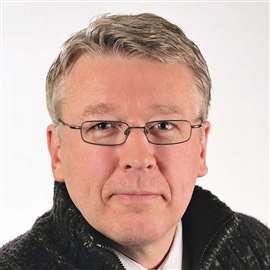A Powerful Lady
26 February 2018

BY ROBERTA PRANDI
After first firing in May 2016 at the Ansaldo Energia Test Power Plant in Birr, Switzerland, the new Ansaldo Energia GT36 gas turbine successfully passed a series of rigorous test campaigns, and finally completed its validation process with a thermal paint test.
“After a six-year development program, our expectations from validation were very high,” said Patrik Meier, Ansaldo’s R&D program manager. “We pushed our test machine, which we named Irene Sofia after two team member’s children, to the limits and beyond. To successfully complete the validation and confirm that our design intents were met, made us very happy and confident of a fruitful future for the GT36 product.”

The validation process was carried out in the Birr test facility, a full-scale simple cycle power station that can be used for the operation and validation of the fully instrumented engine under real power plant conditions as the power is dispatched to the Swiss power grid.
The validation test program included comprehensive testing of the two stages in the sequential combustion system, part- and full-load mapping, transient operation and performance testing. The validation engine was equipped with more than 3000 measurement points, including a telemetry system which transferred more than 500 measurements from the rotating parts.
The test results confirmed for the GT36-S5 (50Hz version) a power output of 538 MW and 42.8% efficiency. For the 60-Hz GT36-S6, the power output is 369 MW and 42.3% efficiency. In combined cycle operation, the net efficiency reaches 62.8% for 50 Hz and 62.6% for 60 Hz in 2+1 plant configuration.
The GT36 gas turbine in the 50 Hz version has a hot start timing of 10 minutes (30 minutes in combined cycle). Fast ramping is 80 MW/min in combined cycle operation. The relative efficiency at part load is over 99% at 80% load in combined cycle and over 95% at 60% load.
The GT36’s combustion system—a can combustor solution with sequential combustion—had already been tested starting in 2013, as a single component in a combustor test rig, at full size and under full mass flow, at the DLR (the German Aerospace Center) in Cologne, Germany.
The sequential combustion principle is similar to that of the GT26 turbine, wherein a first premix burner the combustion temperature is not too high allowing good CO burnout and low NOX formation. In the second burner, additional fuel is injected and the combustion temperature reaches the high level of the GT36 H-class turbine. The second burner is very close to the turbine, therefore the residence time of the hot gas is very short and NOX formation is kept low, the company said.
Unlike the GT26 unit, both GT36 burners are in a can. Therefore the additional high-pressure turbine stage, which is between the two burners in the GT26, is replaced by a dilution air mixer. The dilution air mixer feeds additional air and lowers the temperature to a level which is still high enough for auto-ignition in the second burner and eliminates the risk for flash-back.
“The GT36 sequential combustion technology is very robust and builds on the vast experience with the GT26 gas turbine,” Meier said. “In terms of exhaust emissions, the GT36 registers single digit CO emissions. NOX, emissions are below 25 ppm NOX in Performance Optimized (PO) operation mode and 15 ppm NOX in eXtended Lifetime (XL) operation mode.

“The XL mode is the default operation mode until 95% load and also offers extended lifetime with increased service interval of 32 000 hours. An optimized inspection plan, limited to visual inspections and turbine-only opening (no dedicated, separate combustor inspections), as well as a design for simple part exchange minimizes the time needed for scheduled inspections. With projected reliability numbers like for the GT26, the resulting availability is excellent.”
Some of the key design elements and main architecture features of the new turbine are a welded rotor design for less maintenance and longer lifetime and a compressor with four variable vane rows for better turndown and partload efficiency.
“Variable vane rows are geared with electric motors instead of hydraulic actuators for higher reliability and less oil pipe work around the gas turbine,” Meier said. “The air-cooled four-stage turbine with external air cooler delivers better combined cycle efficiency and high flexibility. For easy maintenance all hot gas paths parts can be replaced with partial turbine opening and with the rotor in place.
“While all components are new, much of the design, selected materials and the operational range are similar to those of the GT26 technology.”
The validation of the GT36 gas turbine was the culmination of a development program carried out together with the former Alstom advanced heavy-duty gas turbine business that Ansaldo Energia acquired from General Electric in 2016 along with the latest ratings of the GT26 and GT36 heavy duty gas turbines, and more than 400 Alstom R&D Center employees in Baden, Switzerland.
The company took over intellectual property rights for the GT26 and GT36 turbines, existing upgrades and pipeline technology for future upgrades, and service agreements for 34 GT26 turbines already installed.
The GT36 (and GT26) will be assembled at Ansaldo Energia’s newly completed plant in Cornigliano, Genoa, Italy, with direct access to the sea and a dedicated dock. The individual components manufactured and preassembled in the Genoa-Campi factory are transferred to the new facility, which covers a total surface area of 10 000 m2, where the production cycle is completed with the final assembly of the new GT36 turbines. To make all this possible, the welding area has been extended, with the installation of equipment that can weld rotors up to 200 tonnes in weight and 14 meters in length.
The Irene Sofia GT36 gas turbine joined the Ansaldo Energia GT family. Other products in the company’s portfolio are the heavy duty F-class GT26 and AE94.3A turbines, the small F-Class AE64.3A, and the E-class AE94.2 unit.
POWER SOURCING GUIDE
The trusted reference and buyer’s guide for 83 years
The original “desktop search engine,” guiding nearly 10,000 users in more than 90 countries it is the primary reference for specifications and details on all the components that go into engine systems.
Visit Now
STAY CONNECTED




Receive the information you need when you need it through our world-leading magazines, newsletters and daily briefings.
CONNECT WITH THE TEAM








